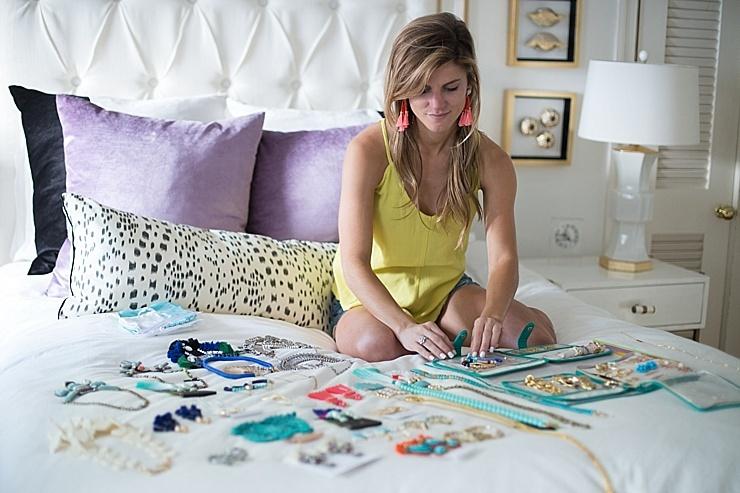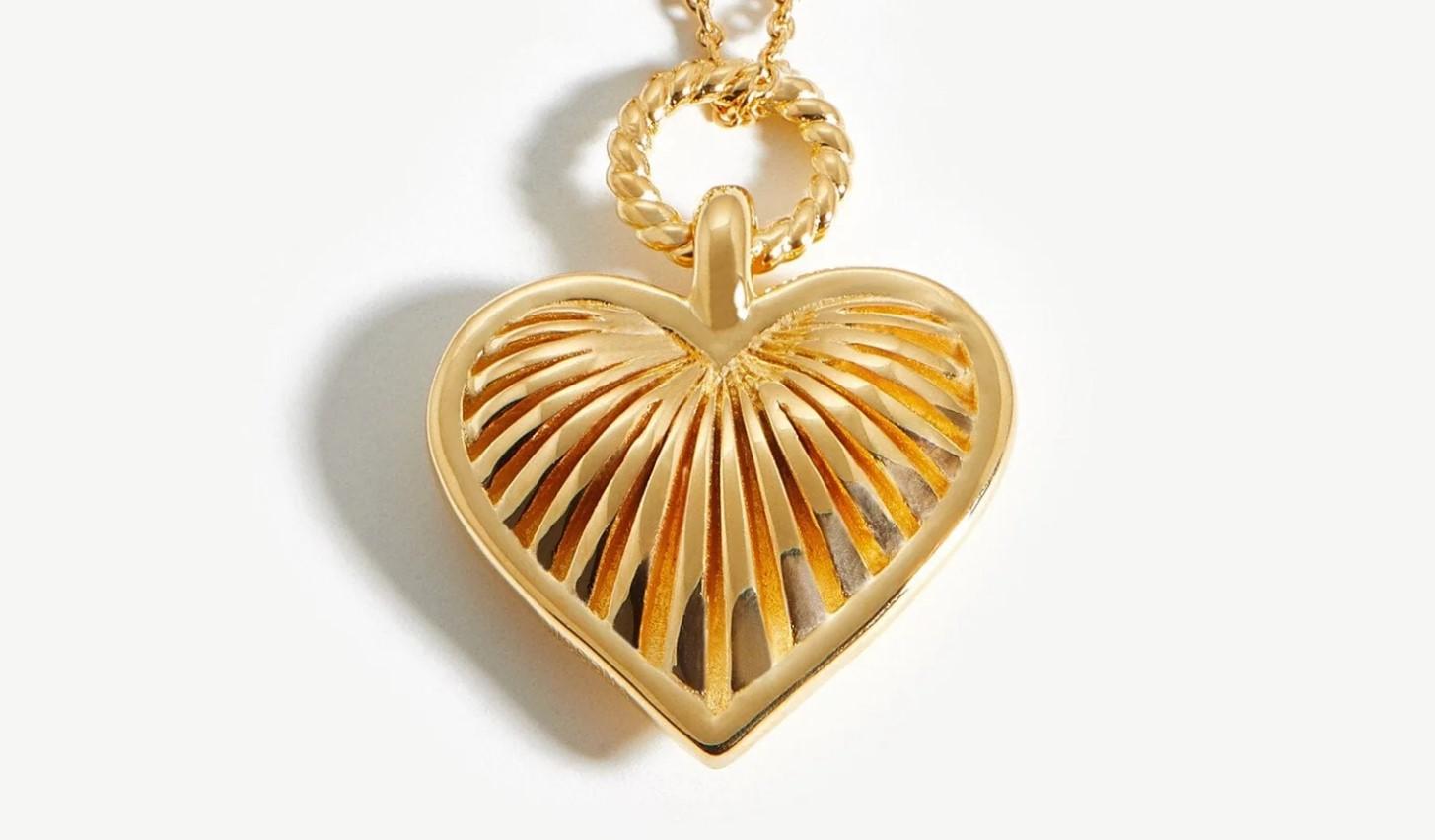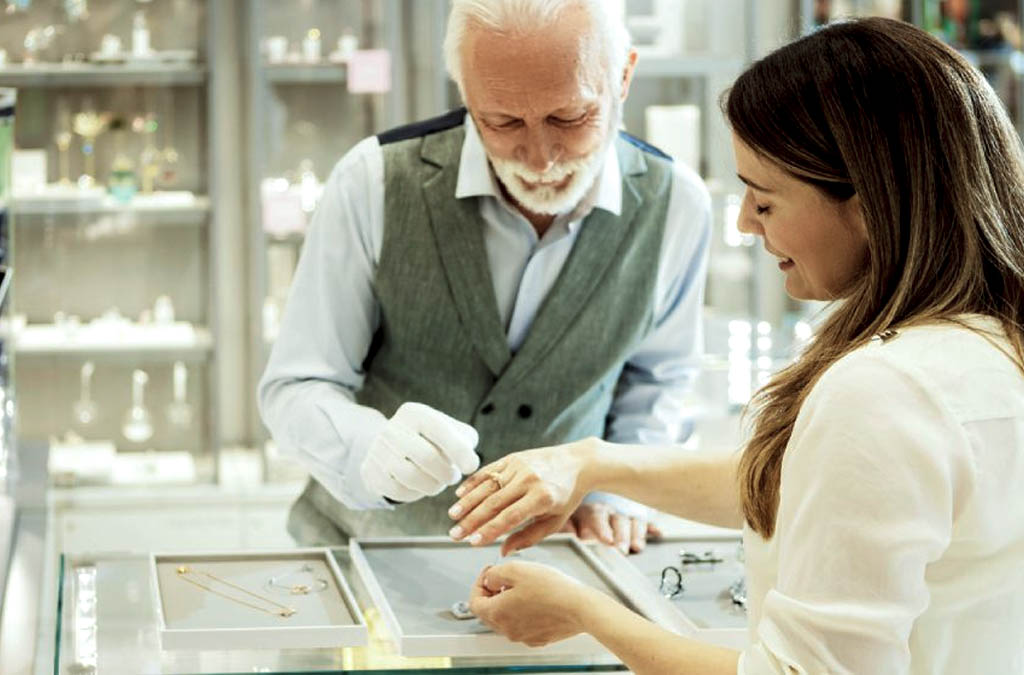Fine jewelry is delicate and can be easily damaged by daily activities. Billions of men and women around the world wear jewelry every day, but not everyone realizes that being careless with your jewelry could result in expensive damages.
- Applying lotion or sunscreen while wearing jewelry can cause buildup and damage to the metal and stones. It is recommended to remove jewelry before applying any lotions or sunscreens.
- Cleaning while wearing jewelry can cause scratches and damage to the metal and stones. It is recommended to remove jewelry before cleaning.
- Exercising or engaging in strenuous activities can cause damage to the metal and stones due to the movements and impact. It is recommended to remove jewelry before exercising or engaging in manual labor.
- Swimming or exposing jewelry to water can cause damage to the metal and stones. It is recommended to remove jewelry before swimming or engaging in water activities.
- Storing jewelry in inappropriate containers or leaving it exposed to air can shorten the life of the jewelry and affect its quality. It is recommended to store jewelry in a proper container made of the right materials and to keep it clean.
- Wearing jewelry while doing household chores can cause damage to the metal and stones due to exposure to chemicals and impact. It is recommended to remove jewelry before doing household chores.
- Traveling with jewelry can also cause damage if not stored properly. It is recommended to keep jewelry in a carry-on bag when flying and to avoid putting it in checked luggage.
By following these tips, you can prevent damage to your fine jewelry and keep it looking beautiful for years to come.
The best way to clean your jewelry

If you do not always have time to make it in for our staff clean your jewelry, there are plenty of ways to take care of your jewelry at home.
- Take Care of Your Jewelry While Wearing It – If your jewelry doesn’t wear quickly, you won’t need to clean it as much. By following all of the guidelines mentioned previously, your jewelry should last longer and require less cleaning.
- Use a Jewelry Polishing Cloth – Using tissue paper or a paper towel can scratch your gold or silver jewelry. To keep these pieces at their highest luster, it is best to wipe them regularly to remove fingerprint smudges and gradual wear which is inevitable with time.
- Purchase an In-Home Cleaning Kit – One of the ways our staff is able to get your jewelry so clean is by placing in an ultrasonic machine, which uses wave vibrations to knock off dirt that is hidden behind stones or in crevices in the metal. Our machine is very large, but smaller ultrasonic machines are available, relatively inexpensively. It is important to note that some stones can be damaged by the strong vibrations of these waves. The only stones safe to place in an ultrasonic are undamaged sapphires, rubies and diamonds, others are handled on a per piece basis.
- Do Not Clean Damaged Jewelry – If your jewelry is damaged in any way DO NOT CLEAN IT! Placing a cracked stone in an ultrasonic machine could cause the stone to crack into two or more pieces. If your stone is loose or the prongs are weak, cleaning it could remove the dirt or lotion that was preventing that stone from falling out. Cleaning a damaged jewelry item will always damage it before making it better, so it is always best to repair damaged jewelry as soon as possible.
Remember to be gentle when cleaning your jewelry, especially delicate pieces. If you’re unsure about what kind of jewelry you’re working with, it’s best to leave the cleaning up to a professional jeweler who can assess the piece and determine the material it’s made from.
The best way to clean specific stones and metals

Each stone is different and requires a different method of cleaning. It is important to understand the qualities of your stones and metals to prevent them from being damaged during cleaning. When cleaning jewelry, it is important to remember that more debris will get caught underneath your stones than on top of them.
- Diamonds – Diamonds can be easily cleaned using a soft-bristled brush (like a toothbrush) and a mild solution comprised of ammonia and water. Using this solution, you can gently scrub away all dirt and gunk which has gotten up underneath your stone and prevents it from shining at its brightest. It is best to avoid touching your diamond because finger print smudges and body oils will rub off on the stone, dulling its brilliance. Diamonds are hard enough that they can be cleaned by being left in an ultrasonic, assuming they are not cracked or damaged in any way.
- Gemstones – The safest way to clean most gemstone jewelry is to soak it in a bowl of slightly warm, soapy water and using a toothbrush (or something similar) to remove the grime caught underneath the stone. Because approximately 99% of all colored gemstones are treated in some way to enhance their color, it is best to only use a simple solution for cleaning gemstones to prevent the color from dulling. Certain gemstones, such as rubies and sapphires, are able to be cleaned in an ultrasonic, but gemstones are much softer than diamonds and require much more care when being cleaned.
- Opals – Opals are delicate stones, but it is possible to clean them. If an opal is solid, it may be soaked in slightly warm water. In fact, opals are made up of 3-21% water, and they can become damaged if they get too dried out. The problem with cleaning opals is that some of them are doublets or triplets. This means that there is a piece of material (usually either black onyx or another dark stone) which is placed under the opal to bring out more intensity in the colors. In a triplet, there is also a piece of clear, domed quartz covering the top of the opal. Soaking doublets or triplets in water could cause the quartz to fog, and it could potentially weaken the material connecting the opal with the stone underneath. If you have concerns over whether your opal jewelry is a doublet, triplet or solid, any of our highly trained staff members would be happy to help you determine this for sure.
- Pearls – Gems that come from living creatures are always more delicate than those formed underground through millions of years of heat and pressure. The nacre layers of a pearl are very easily damaged by every day chemicals and ordinary cleaning solutions. We recommend cleaning pearls using only water (purified water if possible), or a very mild soapy solution. It is also important to not leave your pearls in a solution for too long or to scrub it too hard. It is not a bad idea to wipe pearls clean with a soft cloth after wearing them to remove any body oils or perfume.
- Metal Jewelry – Your solid gold, silver and platinum jewelry is much easier to clean than the pieces containing stones. These pieces can be soaked in rubbing alcohol to dissolve any sticky grime. A toothbrush can be carefully used to clean engraving, filigree and other hard to reach areas. A silver or gold cloth is also a good investment to keep your metals at their highest luster.
In general, it’s best practice to avoid using cleaners with harsh chemicals like chlorine or bleach and to avoid exposing stones and metals to sudden temperature changes.
The best way to store your jewelry

We all love adorning and showing off our jewels, but not every piece is right for every occasion. Some pieces are best worn only a few times a year. For these precious items, it is best to store them in a way that the elements will not damage them while they are not being worn.
- Store Jewelry Separately – If you are storing lots of things together, make sure to be careful with your jewelry and pack it carefully and separately. Jewelry is a delicate thing and can be easily damaged by other items placing pressure over an extended period of time in the same spot. It is best to store each piece of jewelry long-term in an individual box, or jewelry box that holds each piece in a fixed spot. It is important to remember that even diamonds can be scratched by another diamond.
- Avoid Storing Pearls or Beads in a Pouch – Storing pearls or beads in a pouch can cause them to become tangled or wear on the knots so that they do not lie flat. Storing pearls in a pouch can become even more dangerous because the pearls hitting one another could potentially cause them to crack or scratch.
- Avoid Storing Pearls and Opals in a Plastic Bag – Storing pearls or opals in a plastic bag could cause them to dry out over time because of the lack of moisture in the bag.
- Avoid Heat – Intense heat is the enemy of jewelry. Extended exposure to heat can make metal bend easier and crack or damage stones. Some colored gemstones may even lose some of their color when left in conditions of extreme heat.
- Store Silver in an Airtight Bag – Silver tarnishes due to a process called oxidation, which occurs when it is exposed to oxygen. Keeping your silver stored in an airtight bag or container will help prevent it from tarnishing and losing its luster over time.

For 10 years, I’ve been in the luxury publishing industry, editing magazines with a special emphasis on watches and jewellery. I bring passion and authority to my work, featuring fresh jewelry collections, interviewing renowned designers and historians, reviewing globally-acclaimed jewelry books, and keeping my audience updated on trade show happenings. I take pride in highlighting jewelers who specialize in vintage or antique pieces.




